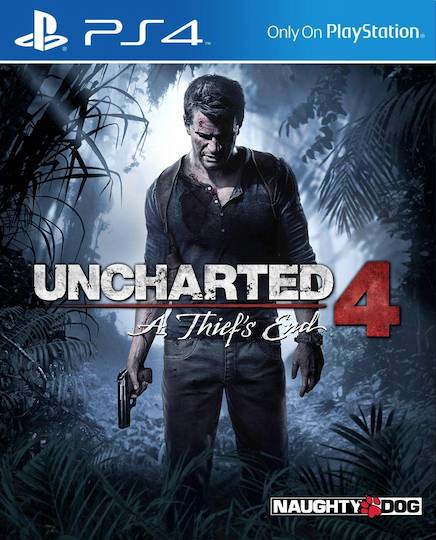Technology and Teenagers:
Before further examining how rock ‘n’ roll brought the races together, it is important to retrace the convergence of certain economic and technological factors which gave white teenagers access to music.
The major label’s lack of interest in the specialty markets may have been largely due to the fact that, until the fifties, recorded music carried the label of class1. Only the upper and upper-middle class could afford a phonograph, and their tastes encompassed big band, crooners and classical music. Country and rhythm and blues music was mainly enjoyed on the radio.
In the fifties, however, new technologies were quickly changing this paradigm. In 1948, the “Battle of the Speeds” had just begun2. CBS (Columbia) introduced the 33 1/3 rpm disc, or the LP, which could record roughly five times longer than the old 78 rpm format with greatly increased fidelity3. President of CBS laboratories anticipated an increased interest in classical music, now that an entire symphony could be recorded on a single disc. The next year, RCA released the 45 rpm disc format4. The disc could only hold roughly 3 minutes worth of music per side, which was perfect for popular music. Furthermore, they were relatively inexpensive, so they were ideally marketed for teenagers5.
To match these new formats, CBS and RCA marketed record players nearly at-cost and capable of playing all three format of disc6. In the mid-fifties, an “Elvis Presley model record player” was available for $47.85, and could be purchased for $1 down and $1 a week7. Late fifties American companies were announcing sales of up to 10 million portable record players yearly. Also, whereas a family would previously only have one family radio, small transistorized radios became available for as low as $25.
These new technologies were being introduced to a country with a booming post-war economy. During the fifties, the American Gross National Product rose from $213 billion dollars to $503 billion in ten years8. In the same time, the per capita income increased by 82% and the unemployment rate was between 4 and 5.5%.
One of the groups that especially enjoyed this financial boom was the young people. Scholastic magazine’s Institute of Student Opinion reported in 1956 that there were 13 million teenagers in America9. A typical teenager earned $10.55 a week, while teenagers across the country earned $7 billion dollars annually (a 26% increase in three years.) According to David Halberstam: “This new generation was armed with both money and the new inexpensive appliances to which to listen to [music]. […] They had almost no memory of a Depression and the great war that followed it. There was no instinct on their part to save money.”
The teenagers of the fifties were now equipped with disposable income and inexpensive electronics and 45s on which to spend it. No longer reliant on “family appliances” which were subject to parental rules and tastes10, these young people were now free to experiment with previously forbidden music: rhythm and blues. It is difficult to say exactly why young white teenagers would be drawn to this music, but Charlie Gillett offers the following explanation: “The vocal styles were harsh, the songs explicit, the dominant instruments – saxophone, piano, guitar, drums – were played loudly and with an emphatic dance rhythm, the production of the records was crude. The prevailing emotion was excitement.11” In other words, it was the polar opposite of the crooner ballads and big band sound which were popular at the time. Gillett also suggests that the first listeners may have been those with “relatively sophisticated standards for judging music”12, followed by those who were naturally attracted to the dance beat and music with a rougher quality to it.
As more and more white teenagers began taking an interest in rhythm and blues music, musicians and record store owners took note. Jerry Wexler recalled that in the early fifties: “We became aware that Southern whites were buying our records, white kids in high school and college.13” In Los Angeles, a rhythm and blues records store named Dolphin Records reported that 40% of their sales were to white people in 1952. The dance halls were experiencing a similar change. According to president of Chess records, Ralph Bass: “they didn’t let whites into the clubs. Then they got ‘white spectator tickets’ for the worst corners of the joint. They had to keep the white kids out, so they’d have white nights sometimes, or they’d put a rope across the middle of the floor. The blacks on one side, whites on the other, digging how the blacks were dancing and copying them. Then, hell, the rope would come down, and they’d all be dancing together.14” This phenomenon may have been relatively negligible in relation to the total market, but the trend was growing and important people were beginning to take note.
Innovative Broadcasters:
Sometime in early 1951, Lee Mintz, record store owner in Cleveland, Ohio, invited disc jockey Alan Freed for a visit15. Freed was considered a “smart, free-spirited man” although many of his employers found him abrasive. He was also somewhat of a vagabond; he was at one point banned from broadcast for offering his services to a competing radio station. In 1951, however, he was the disc jockey for an evening classical music show on the independent station WJW16.
While visiting Mintz’s store, Freed was shocked to see how many white teenagers were buying rhythm and blues records and dancing to music that their parents would have considered completely alien17. Mintz had his own ideas about the success of these records: “It was all about the beat. The beat was so strong in black music […] that anyone could dance to it without a lesson.18” He suggested that Freed change the style of his radio show to cater to this new audience. In his own words, Alan Freed considered the idea: “I heard the tenor saxophones of Red Prysock and Big Al Sears. I heard the blues-singing, piano-playing Ivory Joe Hunter. I wondered. I wondered for about a week. Then I went to the station manager and talked him into permitting me to follow my classical programme with a rock ‘n’ roll party.19”
Freed began his show, named “Moondog’s Rock ‘n’ Roll Party”, in June of 1951. As such, he is credited as the first person to use the name “rock ‘n’ roll” for the music previously referred to as “rhythm and blues” or “race music.20” This name change was significant. Freed’s audience was mostly white and the name “rock ‘n’ roll” allowed him to avoid the negative racial connotations that were associated with other epithets. The words “rock” and “roll” had previously been used in rhythm and blues as euphemisms for sex in songs such as “We’re Gonna Rock, We’re Gonna Roll” and “My Daddy Rocks Me With One Steady Roll.”
“Moondog’s Rock ‘n’ Roll Party” was broadcast on a 50,000 watt clear channel station, and as a result it reached a large section of the Midwest21. The show’s success was instantaneous and remarkable. As David Halberstam put it: “It was as if an entire generation of young white kids in that area had been waiting for someone to catch up to them. For Freed it was what he had been waiting for; he seemed to come alive as a new hip personality. He was the Moondog.”
By 1952, Alan Freed had decided to put on racially integrated rock ‘n’ roll concerts22. He felt he had enough listeners to validate the event, which would feature the artists of the rock ‘n’ roll artists he had been playing23. The response was unlike anything seen before in live music. For the first “Moondog’s Coronation Ball”, over 18,000 teenagers showed up to an auditorium with a capacity for 9,00024. It caused such pandemonium that Freed was forced to cancel the show25. He organized a second reserved-seating show in 1953, which featured artists such as Joe Turner, Fats Domino, the Buddy Johnson Orchestra, the Drifters, the Harptones, the Moonglows, Red Prysock, Ella Johnson, and Dakota Station.
By 1954, Freed’s enormous success playing rock ‘n’ roll to white teenagers had been detailed in Billboard magazine26. That same year, Freed was hired at WINS, a New York radio station. With Freed’s help, it quickly became the foremost popular music station in the city and helped to introduce thousands of East Coast teenagers to rock ‘n’ roll music.
While Alan Freed started the trend and took over in New York, dozens of other disc jockeys began playing rock ‘n’ roll across America. Disc jockeys who catered to this new style include “Danny ‘Cat Man’ Stiles, at WNJR, Newark, New Jersey; […] ‘Symphony Sid’ Torin and Ken Malder at WBMS, Boston; Hunter Hancock, Peter Potter, and ‘Spider’ Webb on the West Coast; […] Ken ‘Jack the Cat’ Elliott and Clarence ‘Poppa Stoppa’ in New Orleans27” and many more.




